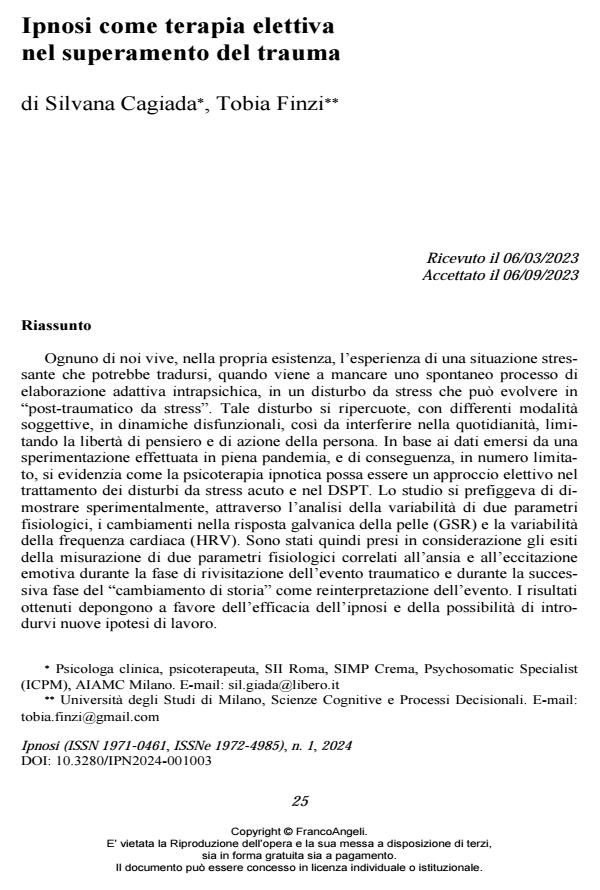Hypnosis as elective therapy in overcoming trauma
Journal title IPNOSI
Author/s Silvana Cagiada, Tobia Finzi
Publishing Year 2024 Issue 2024/1
Language Italian Pages 12 P. 25-36 File size 242 KB
DOI 10.3280/IPN2024-001003
DOI is like a bar code for intellectual property: to have more infomation
click here
Below, you can see the article first page
If you want to buy this article in PDF format, you can do it, following the instructions to buy download credits

FrancoAngeli is member of Publishers International Linking Association, Inc (PILA), a not-for-profit association which run the CrossRef service enabling links to and from online scholarly content.
We all experience, throughout our lives, stressful situations that could result, when a spontaneous process of intrapsychic adaptive elaboration is lacking, in a stress disorder that can evolve into “post-traumatic stress disorder”. This disorder can have repercussions, with different subjective modalities, in the form of dys-functional dynamics, so as to interfere with everyday life, limiting the person’s freedom of thought and action. Based on the data that emerged from an experi-ment carried out during the Covid-19 pandemic, and therefore with limited access to subjects, it is highlighted that hypnosis is an elective psychotherapy in the treatment of acute stress disorders or DSPT. The study aimed to experimentally display the changes in two physiological variables, galvanic skin response (GSR) and heart rate variability (HRV). The results of the measurement of these two physiological parameters related to anxiety and emotional arousal during the reliv-ing phase of the traumatic event and during the subsequent “change of story” phase as a reinterpretation of the event were therefore taken into consideration. The results obtained support the effectiveness of hypnosis and the possibility of introducing new working hypothesis.
Keywords: elective therapy, acute stress, DSPT, physiological parameters (GSR, HRV).
Silvana Cagiada, Tobia Finzi, Ipnosi come terapia elettiva nel superamento del trauma in "IPNOSI" 1/2024, pp 25-36, DOI: 10.3280/IPN2024-001003